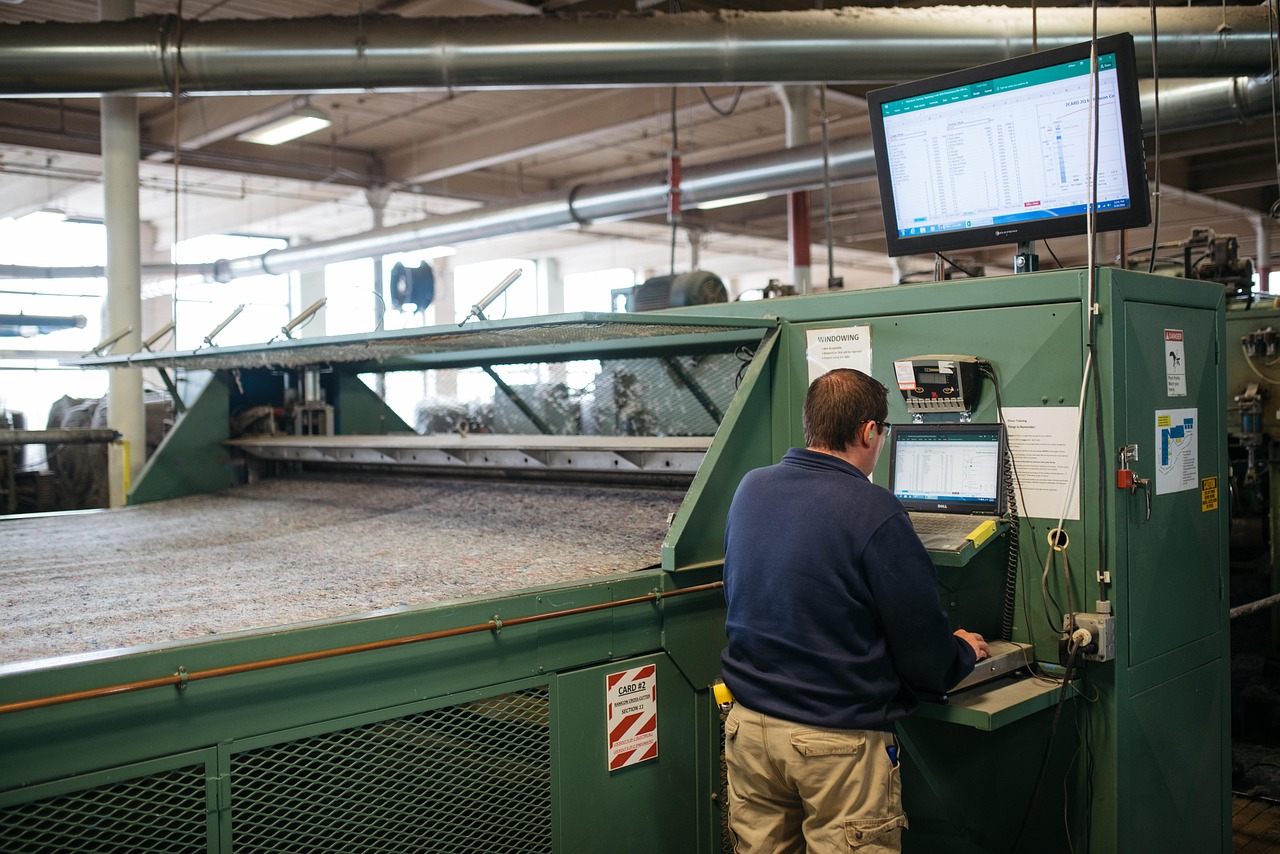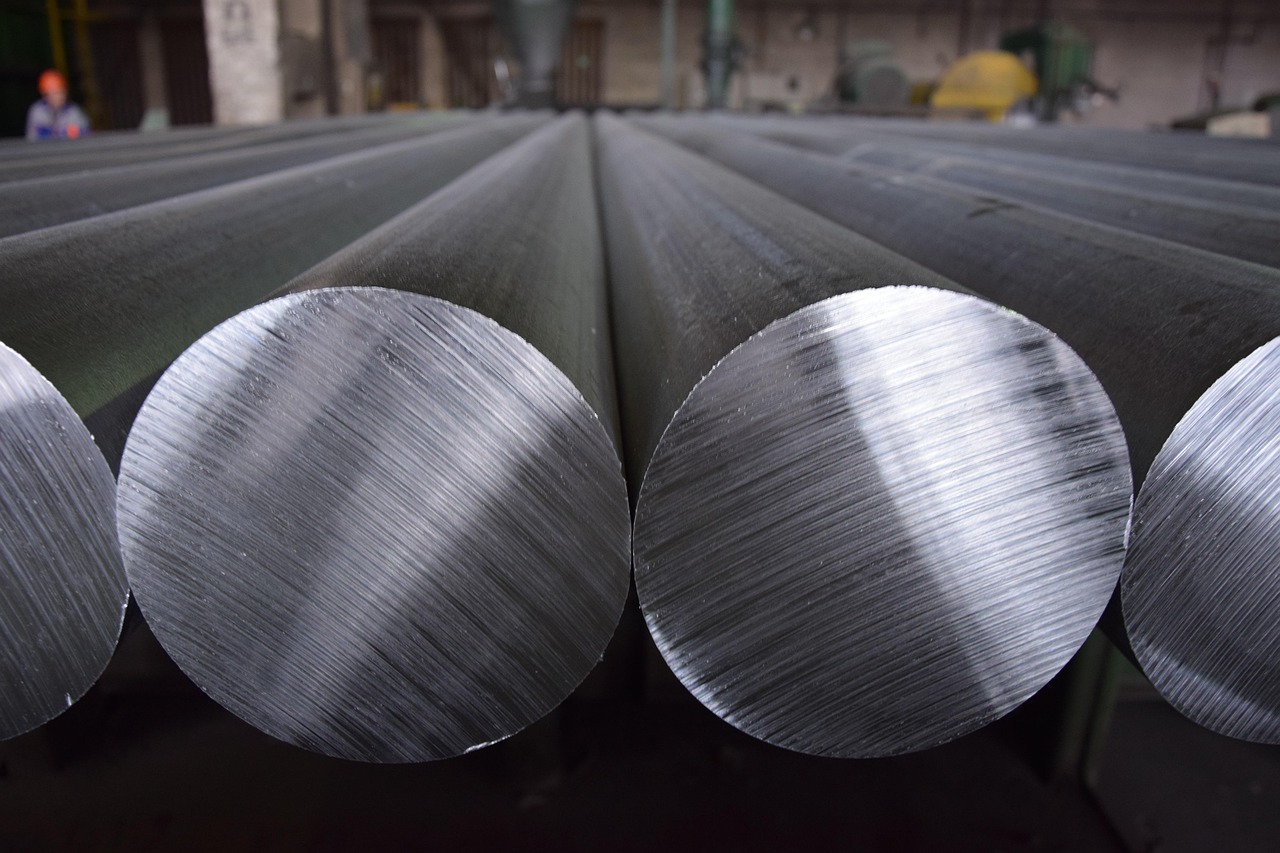Revolutionizing Recycling in Heavy Metal Manufacturing with Digital Twins and IoT
Recycling has become a cornerstone of heavy metal manufacturing, not just as a sustainable initiative but as a critical component of operational efficiency and profitability. Industries that rely on metals like steel and aluminum face mounting pressure to optimize recycling processes while maintaining the integrity of their materials. However, recycling in this space isn’t straightforward. The processes are complex, quality assurance is critical, and supply chains are often difficult to streamline.
This is where cutting-edge technologies like digital twins and IoT (Internet of Things) are being utilized. By introducing smarter systems to track, analyze, and optimize every stage of recycling, manufacturers are unlocking new levels of efficiency and value. Let’s explore how these technologies are driving this transformation and why their integration is reshaping the future of heavy metal recycling.
The Critical Role of Recycling in Heavy Metal Manufacturing
Recycling in heavy metal manufacturing isn’t merely an environmental responsibility—it’s a business imperative. Metals like steel and aluminum are inherently recyclable, with the ability to be repurposed multiple times without losing their strength or durability. This provides manufacturers with a unique opportunity to reduce dependency on costly raw materials and maintain consistent production, even in volatile market conditions.
The economic benefits of recycling are substantial. Recycled metals are often less expensive to produce than virgin materials, primarily because they consume far less energy during processing. For instance, recycling aluminum uses approximately 95% less energy than producing aluminum from raw ore. These cost savings directly improve profitability, giving companies a competitive edge in increasingly tight markets.
However, the challenges are just as significant. Maintaining the quality of recycled materials requires advanced sorting and processing techniques to ensure impurities are removed effectively. Additionally, recycling systems often involve complex workflows with multiple stakeholders, making it difficult to achieve seamless integration. Without proper oversight, inefficiencies can creep into the system, leading to wasted resources and increased costs.
This is where digital twins and IoT come into play. These technologies provide the tools to monitor, analyze, and optimize recycling systems in ways that were previously unattainable. By leveraging these innovations, manufacturers can ensure their recycling efforts are sustainable, profitable, and scalable.
How Digital Twins Transform Recycling Processes
Digital twins are reshaping the way manufacturers approach recycling by offering a digital counterpart to physical assets and systems. These virtual replicas allow manufacturers to monitor operations in real-time, simulate different scenarios, and predict outcomes—all without disrupting actual production. This capability is invaluable in an industry as complex as heavy metal recycling, where efficiency and precision are paramount.
One of the key applications of digital twins is lifecycle tracking. In heavy metal manufacturing, it’s essential to maintain the integrity of recycled materials. Digital twins can monitor every stage of a material’s lifecycle, from its initial production to its eventual recycling and reuse. This ensures that manufacturers can confidently reuse materials while meeting strict quality standards.
Optimization is another significant benefit. Recycling facilities often struggle with inefficiencies in processes like sorting, shredding, and smelting. Digital twins can simulate these processes, identifying bottlenecks and suggesting improvements. For example, a digital twin might reveal that adjusting the speed of a conveyor belt could reduce sorting errors, leading to higher material recovery rates.
Maintenance is another area where digital twins shine. Unexpected equipment failures can bring recycling operations to a standstill, leading to costly delays. Digital twins can predict when machinery is likely to fail by simulating wear and tear based on real-time data. This allows manufacturers to perform maintenance proactively, minimizing downtime and reducing repair costs.
In short, digital twins provide manufacturers with a level of control and insight that is unparalleled, making recycling processes more efficient, reliable, and profitable.
IoT: The Backbone of Real-Time Recycling Management
While digital twins provide a powerful analytical tool, IoT forms the foundation of real-time data collection and connectivity. IoT devices, such as sensors and connected machines, enable manufacturers to monitor recycling operations in real-time, providing a steady stream of actionable insights.
For example, IoT sensors can track the flow of materials through a recycling facility, capturing critical data on quality, volume, and equipment performance. If a batch of recycled steel contains impurities, the system can immediately flag it for reprocessing, preventing substandard materials from entering the production line. This level of oversight ensures that quality remains consistent, even at high volumes.
IoT also helps manufacturers reduce waste by identifying inefficiencies in real-time. Consider a recycling facility where scrap aluminum is being processed. Sensors detect that a significant amount of material is being lost during the shredding stage. With this insight, operators can adjust the settings on the shredder to minimize waste, improving overall material recovery rates.
Perhaps one of the most transformative aspects of IoT is its ability to integrate recycling facilities with the broader supply chain. By connecting all stakeholders—recycling centers, transportation providers, and manufacturing plants—IoT creates a seamless flow of materials. This closed-loop system ensures that recycled metals are reintegrated into production processes efficiently, reducing delays and maximizing value.
In an era where data is king, IoT provides the foundation for smarter, more efficient recycling systems that adapt to the needs of manufacturers in real-time.
Practical Applications for Organizations New to Digital Twins and IoT
For organizations that haven’t yet adopted digital twins and IoT, the initial implementation can seem overwhelming. However, starting with small, focused applications allows companies to gain confidence and build momentum.
A simple entry point is using IoT for real-time equipment monitoring. By installing sensors on key machinery, manufacturers can track performance and identify inefficiencies. For instance, a facility processing scrap aluminum might install sensors on conveyor belts and shredders. These sensors provide data on speed, vibration, and temperature, helping operators make adjustments that improve efficiency and prevent breakdowns.
Digital twins offer another practical starting point. Companies can create a digital replica of a single process, such as smelting recycled steel. By testing adjustments in the digital environment—like changes in temperature or processing time—manufacturers can optimize the process without risking disruptions in the real world.
Training and partnerships can also ease the transition. Collaborating with technology providers or consultants ensures companies have access to the expertise needed to deploy and manage these technologies effectively.
Starting small and scaling over time allows organizations to see tangible results early on, building the case for broader adoption of digital twins and IoT.
Combining Digital Twins and IoT for Maximum Impact
The true power of these technologies emerges when they are used together. IoT sensors provide the real-time data that digital twins need to simulate operations accurately, creating a dynamic, continuously updated model of the recycling process.
For example, a recycling facility might use IoT to monitor the performance of a furnace used to melt aluminum. Sensors collect data on temperature, energy consumption, and material flow. This data is fed into a digital twin, which simulates how different adjustments could improve efficiency or reduce waste. Operators can test these adjustments virtually before implementing them, ensuring that changes produce the desired outcomes without risking disruptions.
This synergy not only enhances individual processes but also creates a more cohesive, adaptable recycling system. Manufacturers gain the ability to respond to changes in demand, identify emerging trends, and continuously refine their operations.
Emerging Technologies Enhancing Recycling Efficiency
While digital twins and IoT are at the forefront of recycling innovation, other technologies are poised to further enhance efficiency and sustainability.
Artificial intelligence (AI), for instance, is increasingly being used to improve material sorting. By combining AI with IoT sensors, manufacturers can create systems that automatically identify and separate high-quality metals from impurities. This reduces contamination and ensures that recycled materials meet stringent quality standards.
Blockchain is another emerging technology with significant potential. By providing a transparent, tamper-proof record of a material’s lifecycle, blockchain can enhance traceability and accountability in recycling. This is especially valuable for manufacturers looking to meet regulatory requirements or provide assurance to customers about the quality and origin of their materials.
Advancements in energy-efficient recycling technologies are also making waves. Innovations in smelting techniques and equipment design, when paired with digital twins, can dramatically reduce the energy required to process recycled metals, lowering costs and environmental impact simultaneously.
The integration of these technologies with digital twins and IoT creates a robust ecosystem that empowers manufacturers to optimize recycling processes and achieve long-term sustainability.
Conclusion: The Future of Recycling in Heavy Metal Manufacturing
Recycling in heavy metal manufacturing is no longer just about meeting quotas or reducing costs—it’s about embracing innovation to build a smarter, more sustainable future. With the power of digital twins and IoT, manufacturers can tackle the challenges of recycling head-on, transforming inefficiencies into opportunities for growth and improvement.
As these technologies continue to evolve, the potential for innovation in recycling will only grow. From AI-driven sorting to blockchain-based traceability, the future of recycling is bright, promising not just operational efficiency but a stronger commitment to sustainability and resilience in the industry.
By taking proactive steps today, manufacturers can position themselves at the forefront of this transformation, leading the way toward a more efficient, sustainable, and profitable tomorrow.




